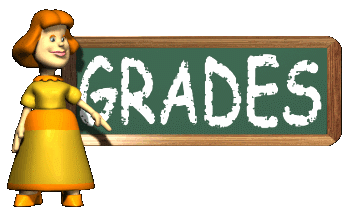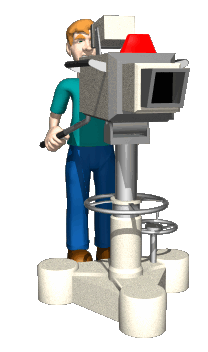What I’ve learned by implementing Skills Based Grading (SBG) in my physics classroom this year…
- The skills required for success on the end-of-year state Regents Physics exam are but a small subset of the skills I teach in my class. I had hoped this was the case — every teacher wants to think they teach beyond the minimum requirements of the curriculum, but having it in front of me in black and white reinforced this, and also allowed me to pick a topic or two for a “deep dive,” without fear of shorting the students on material they need to be successful on their final exams.
- Students who take the time to “shore up their learning” and reassess in an ongoing manner quickly learn how to learn in my class, and rarely need the opportunities for continued reassessment. After a few weeks of the SBG program, those who “drink the SBG Kool-Aid” learn exactly what they need to study and execute on their assessments, and therefore are better prepared for the initial assessments with no need to undertake reassessments.
- Students who slack during the first part of the year and dig themselves a hole have considerably less success in reassessing a multitude of skills later in the year… at this point the SBG system becomes an exercise in grade improvement instead of learning. Next year, I plan on putting a two-week limit on reassessments to both save my sanity in grading as well as encouraging students to avoid this situation.
 Not all assignments need to be graded. Many of our labs and hands-on projects serve to build understanding, but a full rigorous assessment of these multi-faceted projects is complicated in an SBG system. After struggling with this the first half of the year, I realized that I could assess these projects based on a single skill, or at times, not at all. It’s important to keep in mind the ultimate goal is student learning and understanding, NOT grading. The more I embrace this fundamental change in thinking, the more freedom I enjoy in designing activities to allow students to build their own understanding. Grades are NOT the goal, learning is.
Not all assignments need to be graded. Many of our labs and hands-on projects serve to build understanding, but a full rigorous assessment of these multi-faceted projects is complicated in an SBG system. After struggling with this the first half of the year, I realized that I could assess these projects based on a single skill, or at times, not at all. It’s important to keep in mind the ultimate goal is student learning and understanding, NOT grading. The more I embrace this fundamental change in thinking, the more freedom I enjoy in designing activities to allow students to build their own understanding. Grades are NOT the goal, learning is.- Automated scoring / feedback systems for exams is a huge timesaver. Last year I invested in Remark OMR software, which allows me to set up exams and have the results automatically scanned and tabulated, providing separate feedback on any number of skills from the same written assessment. Without spending hours and hours grading, I take the time to set up a quality assessment up front, program the software to give me the information I need, and the actual grading takes minutes. Further, by taking the time to set up these assessments now, I’m building a library of assessments I can pull off the shelf in the future.
- The flipped classroom videos I created to help students who missed class for various reasons provide an excellent introduction to topics. Toward the second half of the year I began assigning students to watch the videos as homework to introduce and / or reinforce the basic problem solving skills required for the topic under study. Since I began this practice, activities and labs have gone more smoothly, students have become more independent in their problem solving, and the quality of questions and discussion in the classroom has gone up tremendously. I would surmise that because students feel more comfortable in the “standardized problem solving” after having watched these videos, they feel more open to taking the next step and pushing their understanding to the next level.
- Students who didn’t do their work in the old system didn’t do their work in the new system. It shouldn’t have been a surprise, but the SBG system is not a silver bullet. Regardless of assessments, classroom styles, etc., I can’t force students to learn. Only by active engagement and hard work is anything worthwhile undertaken successfully, and my physics classroom is no exception. You can lead a horse to water, but you can’t make it drink.
- My time allotment with students needs more thought. In the words of a colleague of mine, you can take the horse to the water, then hold its head under the water until the liquid soaks through its pours and it ingests the water forcefully. I’ve tried this brute force method with a few students who I just couldn’t seem to engage this year. I’ve pulled them in for (in)voluntary extra sessions, hounded them both in class and out, and all but pushed the hand holding the pencil, with mixed success. In some cases the students have pulled through and improved, but I’m not certain the effort is being focused on the right students. When I do this, I spend 80% of my time with the bottom of my class — is this really fair to the remainder of the class, those who are engaging and interested? Further, am I instilling a total hatred of science and physics and school in the students I’m trying to pull along? This definitely requires more thought.
- There is still a place for the “drill and kill” method of problem solving practice. I love inquiry-based activities, and students building their own understanding, utilization of the modeling cycle, but learning how to solve standardized problems quickly and efficiently is also a requirement in our school system, and there really is no substitute for just diving in and practicing. I’m not advocating this as a “day after day after day” strategy, but without fail, my students’ assessment scores and understanding levels go up when they’ve had the opportunity to work through problem sets and receive feedback on their work.
- I am 100% certain I want to continue utilizing SBG in my Regents Physics classes next year. I feel the methodology has clarified our course objectives, reduced student stress, and helped emphasize learning while de-emphasizing grades in our classroom. Students get detailed feedback on strengths and weaknesses, and those who utilize the system correctly develop individualized learning plans tailored directly to their needs — individualized self-directed differentiation. Of course, I see many opportunities for improvement in the classroom, things I want to change next year, and items I’m still not sure how to best attack — but implementation of SBG this year has helped both my students and myself, and it has also emphasized my primary goal for students each year: teaching students to be independent learners.


